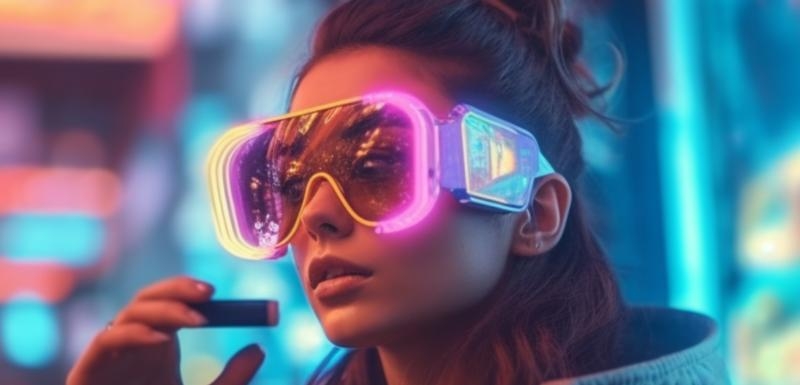Augmented Reality's Influence on Commerce: A Step Beyond Your Wildest Dreams
 Remember when augmented reality (AR) was just about chasing Pikachu through a supermarket while ignoring real-life responsibilities? Good times. But AR has grown up — and now it’s messing with your shopping habits. These days, it’s not about catching virtual animals. It’s about previewing how that $3,000 couch looks in your living room without needing to haul it in first. And the crazy part? It’s actually working.
Remember when augmented reality (AR) was just about chasing Pikachu through a supermarket while ignoring real-life responsibilities? Good times. But AR has grown up — and now it’s messing with your shopping habits. These days, it’s not about catching virtual animals. It’s about previewing how that $3,000 couch looks in your living room without needing to haul it in first. And the crazy part? It’s actually working.
From fashion to furniture, beauty to B2B, AR is no longer a gimmick. It's a conversion engine dressed up like a toy. The ability to superimpose digital products into the real world is fundamentally changing how consumers interact with commerce — and it’s not just the big brands cashing in anymore.
The Rise of “Try Before You Buy” — Without Leaving the Couch
We’ve all had the moment: you order something online and think, “This will either be perfect or look like it belongs in a haunted motel.” AR eliminates the guesswork. Instead of relying on Photoshop and hope, customers get a digital preview of exactly what they’re buying — in their own space, on their own face, or wherever it’s meant to go.
Warby Parker lets you virtually try on glasses. IKEA lets you drop couches into your living room. Sephora lets you test lipstick shades without getting weird looks in a store. The result? Happier customers, fewer returns, and way more confident clicking on that “Buy Now” button.
Stats back it up. Shopify found that products with AR content showed up to 94% higher conversion rates. And customers who engage with AR are also significantly more likely to remember your brand and come back for more. So yeah, it’s more than a fancy trick — it’s a sticky, effective user experience.
AR Has Moved From Novelty to Expectation
Here’s the kicker: it’s not just cool anymore — it’s expected. Customers aren’t impressed by spinning 3D models like they were in 2018. They want interaction, personalization, and real-time context. If your competitor is letting someone see what that 75" TV looks like on their wall and you’re still showing four janky JPEGs, guess who’s getting the sale?
Brands using AR aren’t just boosting engagement; they’re building trust. When people know what they’re getting, they buy more confidently — and complain less. That’s a win for customers, for support teams, and for your return policy, which probably deserves a break.
It’s Not Just Retail — B2B Is Getting in on the AR Action
If you think AR is just for hip DTC brands selling sneakers and skincare, think again. The B2B world is quietly leveraging AR in some seriously clever ways. Complex industrial equipment can be demoed virtually. Trade show booths can run 24/7 with interactive AR displays. Real estate agents are giving virtual walkthroughs of entire buildings from across the country.
Even medical device companies are using AR to train surgeons or show off machinery. The days of shipping a product prototype across the world just to close a sale? Going extinct faster than Flash animations.
“But Isn’t AR Expensive?” Actually… No.
It used to be. Not anymore. Development platforms like 8thWall, Zappar, and mobile-native tech like ARKit (Apple) or ARCore (Google) have made it cost-effective to build impressive AR experiences — even if your budget is more duct tape than Tesla.
If you’re running a Shopify or WooCommerce site, some plugins let you plug in 3D models without touching code. Need to show off a product in AR? Upload the asset, embed the viewer, and boom — you’re in the future. And if you're not using a major eCommerce platform, a good developer can have you up and running with WebAR in days, not months.
The Bottom Line: AR Is Here, and It Pays Off
AR isn’t a shiny distraction anymore — it’s a functional tool that drives results. It reduces friction, increases confidence, slashes returns, and makes your brand look like it has its act together. Even better, it gives customers an experience that feels fun, fresh, and helpful. That's a rare trifecta in commerce.
The brands that lean in now are going to reap the benefits: stronger loyalty, higher sales, and better engagement. The ones that don’t? They’ll still be trying to figure out why people are bouncing after 10 seconds on a product page that looks like it was built in 2009. You decide which camp you want to be in.
|
|


 Remember when augmented reality (AR) was just about chasing Pikachu through a supermarket while ignoring real-life responsibilities? Good times. But AR has grown up — and now it’s messing with your shopping habits. These days, it’s not about catching virtual animals. It’s about previewing how that $3,000 couch looks in your living room without needing to haul it in first. And the crazy part? It’s actually working.
Remember when augmented reality (AR) was just about chasing Pikachu through a supermarket while ignoring real-life responsibilities? Good times. But AR has grown up — and now it’s messing with your shopping habits. These days, it’s not about catching virtual animals. It’s about previewing how that $3,000 couch looks in your living room without needing to haul it in first. And the crazy part? It’s actually working.